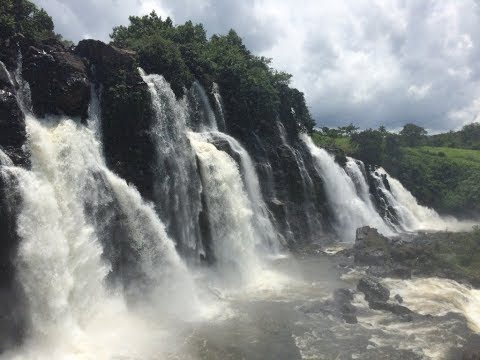
The Central African Republic (CAR) is one of the less trodden paths in African tourism, primarily due to its complex political situation and lack of infrastructure. However, for the intrepid traveler, it offers an unparalleled glimpse into wildlife adventures and cultural experiences that are hard to match anywhere else on the continent.
#### Understanding CAR
Located at the heart of Africa, surrounded by Cameroon, Chad, Sudan, South Sudan, the Democratic Republic of Congo, and the Republic of Congo, CAR boasts expansive natural forests, savannas, and river systems. Bangui serves as its capital and is typically the entry point for most visitors.
#### When to Visit
The best time to visit CAR is during the dry season from November to April. During these months, roads are more navigable and wildlife viewing is at its peak due to thinner vegetation and animals congregating around water sources.
#### Safety First
It’s essential to note that travel advisories often classify CAR as risky due to political instability and security issues. Prospective visitors should regularly check updates from their respective governments’ travel advisories. Hiring a local guide or working with an established tour operator who understands the terrain well is strongly recommended if one decides to proceed with a visit.
#### Attractions in CAR
**Dzanga-Sangha Special Reserve**: This protected rainforest area is part of a larger conservation zone known collectively as the Sangha Tri-National Park alongside areas in Cameroon and Congo. It’s famous for its large populations of forest elephants seen from viewing platforms especially around Dzanga Bai (elephant clearing). Other wildlife includes bongos (a type of antelope), gorillas, and various species of monkeys.
**Manovo-Gounda St Floris National Park**: A UNESCO World Heritage site featuring diverse landscapes ranging from grassland plains to forested hills. While wildlife in this park has suffered under poaching pressures, efforts towards rehabilitation are ongoing. It once boasted large numbers of elephants, cheetahs, leopards, rhinos, buffalo and various antelope species.
**Chinko Nature Reserve**: Covering an area larger than some countries at about 17,600 square kilometers (6,795 square miles), Chinko combines savannahs with dense forests giving shelter to an array of wildlife including lions which have recently made a comeback through conservation efforts.
**Bangui**: As chaotic as it might be sometimes due to political strains over recent years; Bangui holds a certain charm with places like Boganda Museum where artifacts from across CAR are stored giving insights into its cultural history. The bustling markets are also worth visiting for those looking for traditional crafts or local African garments known as ‘pagnes’.
#### Cultural Insights
CAR offers rich cultural diversity with over 80 ethnic groups each preserving their traditional ways of life including languages (though French remains an official language), music styles like N’Gakola played using instruments like balafons (wooden xylophones), drums or zithers.
The Pygmy peoples particularly those found near forested areas have fascinating customs shaped around forest life while further north pastoralist communities such as Fula people offer insights into cattle herding traditions which can be observed during their seasonal migrations.
Visiting villages requires permission from local authorities or community leaders but provides valuable interactions with locals who usually share their customs enthusiastically through dances or storytelling sessions around firesides.
#### Practical Tips
– **Visas**: Most travelers will need a visa obtained before arrival; some countries might have consular services offering visa processing.
– **Health Precautions**: Yellow fever vaccination certificate is mandatory for entry along with other recommended vaccinations such as typhoid and malaria prophylaxis.
– **Currency**: The CFA franc (XAF) is used throughout CAR; carrying sufficient cash is advisable since ATMs can be scarce outside Bangui.
– **Language Barrier**: While French is widely spoken among educated locals; basic French knowledge might come handy when traveling outside urban centers.
### Conclusion
Traveling to the Central African Republic provides unique encounters both in terms of natural beauty and cultural wealth but requires careful planning given safety concerns. Nonetheless for those looking beyond conventional tourist spots; exploring this part of Africa could turn out quite rewarding albeit challenging—a true adventure for daring souls seeking deeper connections with our planet’s hidden corners.
